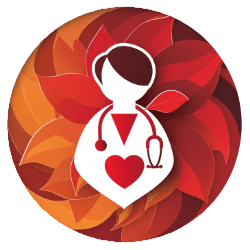A stunning 85% of nurses report feeling significantly stressed on the job, underscoring the urgent need for effective relaxation techniques tailored specifically to their demanding roles.
You're likely familiar with the basics of stress management, but there's a deeper layer of relaxation strategies that goes beyond generic advice, offering you tools that are both practical and transformative.
From personalized yoga routines that cater to your unique physical demands, to advanced breathing techniques that can be integrated into your hectic schedule, these methods don't just aim to reduce your stress levels—they're designed to enhance your overall well-being, resilience, and capacity to provide compassionate care.
Whether it's exploring the profound restfulness of Yoga Nidra or incorporating therapeutic yoga postures into your daily routine, each technique offers a pathway to a more balanced and fulfilled professional life.
Let's explore how these beyond-the-basics practices can revolutionize the way you manage stress, inviting you to discover new dimensions of relaxation that can be seamlessly woven into your life as a nurse.
Key Takeaways
- Personalized yoga routines and therapeutic postures address stress and physical strain.
- Advanced breathing techniques promote relaxation and improved mental health.
- Mindful movement practices like yoga enhance relaxation and mental well-being.
- Yoga Nidra offers deep rest, reducing stress and improving sleep quality.
Personalized Yoga Routines
Understanding that no two individuals are alike, personalized yoga routines cater specifically to your unique needs and goals, ensuring a more effective and fulfilling practice.
As a nurse, you're accustomed to prioritizing the well-being of others, often placing your own needs on the back burner. Yet, embracing a regular practice of tailored yoga can be transformative, offering a respite from the physical and emotional demands of your profession.
Personalized yoga routines, meticulously crafted by a skilled instructor or therapist, can address your specific health concerns, whether they're related to stress, physical strain, or the need for mental clarity. Incorporating customized poses, breathing techniques, and meditation practices, these routines aren't static; they evolve as your needs and abilities change, ensuring continuous support and progression.
Moreover, exploring the gentle, flowing movements of tai chi within your yoga practice can further enhance relaxation and mindfulness. The combination of yoga and tai chi emphasizes the importance of balance—both physically and mentally—providing a holistic approach to your well-being.
Advanced Breathing Techniques
Delving into advanced breathing techniques offers you the key to unlocking profound relaxation and improved mental health, by steering your focus away from life's stressors and toward a state of serene mindfulness. These practices, including deep breathing and mindful breathing, invite you to focus on your breathing, disengaging your mind from distracting thoughts and sensations. This focus not only promotes a positive body image but also aids individuals grappling with eating disorders by emphasizing the present moment.
Incorporating body-focused techniques like the body scan, you progressively relax each part of your body in harmony with your breath, enhancing your awareness of the mind-body connection. Visualization techniques, through guided imagery, allow you to conjure calming scenes, directly influencing your mental state with the ease of access through free apps or online recordings.
Moreover, meditation practices such as mindfulness meditation anchor you in the now, significantly improving your mental well-being and combating anxiety, depression, and pain.
Lastly, movement-based techniques like yoga, tai chi, and qigong merge rhythmic breathing with physical movements, offering a dual benefit of mental focus and physical flexibility.
Together, these advanced breathing techniques form a powerful toolkit for nurturing your mental health and overall well-being.
Mindful Movement Practices
Building on the foundation of advanced breathing techniques, let's explore how mindful movement practices like yoga, tai chi, and qigong can further enhance your relaxation and mental well-being. These practices intertwine rhythmic breathing with postures or flowing movements, not only improving your flexibility and balance but also sharpening your mental focus. They offer a gentle escape from the whirlwind of thoughts that often occupy your mind, grounding you in the present moment.
Incorporating mindful movement practices into your routine can be a transformative experience. However, if you're not typically active or have any health concerns, it's crucial to consult with a doctor before embarking on this journey. Remember, the goal is to nurture your body, not strain it.
As you focus your attention on each movement, these practices help disengage your mind from distractions, fostering a healthier body image and a serene state of mind. By honing your awareness of the intricate mind-body connection, you're not just enhancing your physical flexibility and balance; you're also creating a space where you can truly thrive, both at work and in your personal life.
Yoga Nidra for Deep Rest
For those seeking profound relaxation, Yoga Nidra offers a guided journey into deep rest, employing body scanning and meditation to calm the mind and body. This relaxation technique is a beacon of peace for individuals overwhelmed by the demands of serving others. It's not just about closing your eyes and hoping for tranquility; it's about actively guiding your consciousness to a state of serene awareness.
Yoga Nidra for deep rest isn't only about the immediate relief it provides but also about cultivating a practice that enhances your relaxation skills and overall well-being over time. Here's how it can specifically benefit you:
- Reduces Stress and Anxiety: Regular practice helps in significantly lowering levels of stress and anxiety, making you more resilient in the face of daily challenges.
- Improves Sleep Quality: By promoting deep relaxation, Yoga Nidra can improve your sleep quality, making you wake up feeling more rested and rejuvenated.
- Deepens Meditation Practice: For those already exploring other relaxation techniques, adding Yoga Nidra can deepen your meditation practice, offering a more profound experience.
Incorporating Yoga Nidra into your routine, perhaps accompanied by soothing music, can be a transformative step towards achieving unparalleled relaxation and well-being.
Therapeutic Yoga Postures
Moving from the profound restorative practice of Yoga Nidra, let's explore the physical complement in therapeutic yoga postures that can further enhance your relaxation and stress relief. These postures, centered around gentle stretches and mindful breathing, are designed to calm both your mind and body, offering a sanctuary from the demands of your nursing duties.
Incorporating these relaxation practices into your routine can improve flexibility, balance, and well-being, while also offering relief from chronic pain and muscle tension. With regular practice, you'll notice an uplift in your mental clarity and emotional stability, crucial attributes for someone dedicated to serving others.
Here's a simple guide to get you started:
| Posture | Benefit | Focus Area |
|---|---|---|
| Child's Pose | Reduces stress and fatigue | Breathing and relaxation |
| Cat-Cow Stretch | Improves spinal flexibility | Progressive muscle relaxation |
| Legs-Up-The-Wall | Relieves tired legs and feet | Gentle stretch and relaxation |
Frequently Asked Questions
What Are 4 Relaxation Techniques You Can Use?
You can use deep breathing, progressive muscle relaxation, visualization, and meditation to relieve stress. These techniques help calm your mind, ease muscle tension, and improve your focus and mood, supporting your desire to serve others.
What Is Jacobson Relaxation Technique?
Jacobson Relaxation Technique involves tensing then relaxing your muscles in a specific sequence. It's great for easing stress and promoting sleep. You'll find it especially useful for managing anxiety and achieving deep relaxation.
What Are the 4 Basic Elements of the Relaxation Response?
You're curious about the relaxation response's core elements? They're slow breathing, a decreased heart rate, relaxed muscles, and a quiet mind. These components work together to calm your body and clear your mind.
What Are the Three Most Commonly Used Relaxation Techniques in Psychology?
In psychology, you'll find meditation, deep breathing, and progressive muscle relaxation as the top three techniques. They're powerful tools to manage stress, helping you stay focused and compassionate in your service to others.





